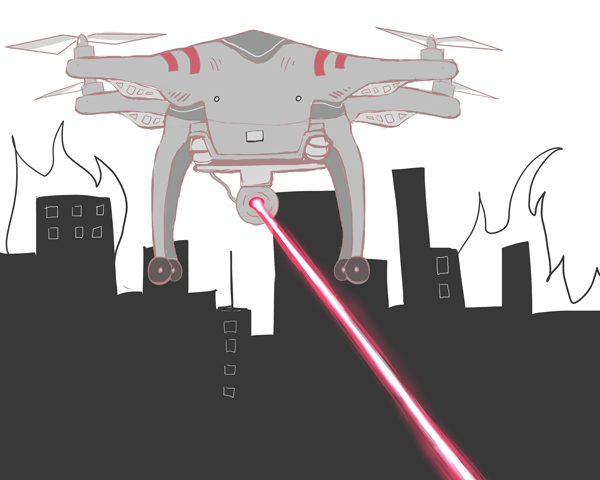In 2014, theoretical physicist Stephen Hawking warned us of the dangers artificial intelligence (AI) poses to mankind. He told BBC News, “Humans, who are limited by slow biological evolution, couldn’t compete, and would be superseded.”
Hawking is best known for his predictive theorem—called Hawking radiation—which predicts that black holes release blackbody radiation. His suspicions about intelligent machines were sparked by developments that helped him cope with his own terminal illness: Amyotrophic lateral sclerosis (ALS). In 2014, Hawking began using a system based on basic AI that assists him in verbal communication.
Despite the fact that many people share this same concern, the rise of AI technologies has only accelerated. Developments in speech recognition, algorithmic trading, and probabilistic programming continue to astonish the scientific community. At McGill, researchers are managing to keep pace with the rapidly evolving industry.
Founded in 1985, the Centre for Intelligent Machines is a McGill research group interested in systems that can sense and perceive their environment, make inferences based on that information, and finally construct and execute a course of action.
“This is the centre for intelligent machines,” Electrical and Computer Engineering Professor Dr. Frank Ferrie said. “[Here], you have theoreticians that are interested in the mathematical problem. And then at the far other end you have engineers interested in solving real-world problems. [Each] of us sees and understands a piece of [AI].”
Within the centre, there are 15 research labs that each tackle a more specialized field within AI. The Artificial Perception Laboratory, headed by Ferrie, took part in a project called Geoide that demonstrates the true extent of McGill’s AI capabilities. This massive cross-university research collaboration is a series of 121 projects related to the collection and interpretation of data about the Earth’s surface.
Ferrie and his students’ role in Geoide related to the construction of artificial visual systems for use by helicopter pilots in low-visibility conditions.
“If you’re in poor weather […] a helicopter can’t fly unless you can see the ground,” Ferrie said. “So the idea was, ‘How can we enhance the ability of a human to navigate in these situations?’”
The group had satellites collecting data and forming models of the environment from locations around the world. From previously collected data, it is possible to project a picture of what the pilot is supposed to see in real time. As part of the project, pilots were given helmets to shield their eyes, while a screen projected a virtual image.
“As the pilot moves his [or her] head around, he [or she] sees a fake world,” Ferrie explained. “It’s not meant to be [exact], it’s meant to provide just enough information so that they can perform their job.”
With this kind of technology, regardless of the weather, pilots can use the image to perform their duties. Ferrie points out that issues could arise if the world changes, invalidating the previously collected data. To tackle this issue, Ferrie’s previous PhD student, Phillippe Simard, developed a model that uses measurements that are made in real time to compare with the previously loaded data.
“So, essentially, we have a model that can build models on the fly,” Ferrie explained.
The Geoide project wrapped up in 2012. Since then, the Artificial Perception Lab has branched out into other fields.
“We are now trying to put together a project for use in an educational environment,” Ferrie said. “So you have a student, and you have a white board, and maybe one of the things you want to do is work interactively. What if the board could interact with you? What if it could push back?”
Currently, the group aims to develop perceptual illusions that will help education become more interactive.









